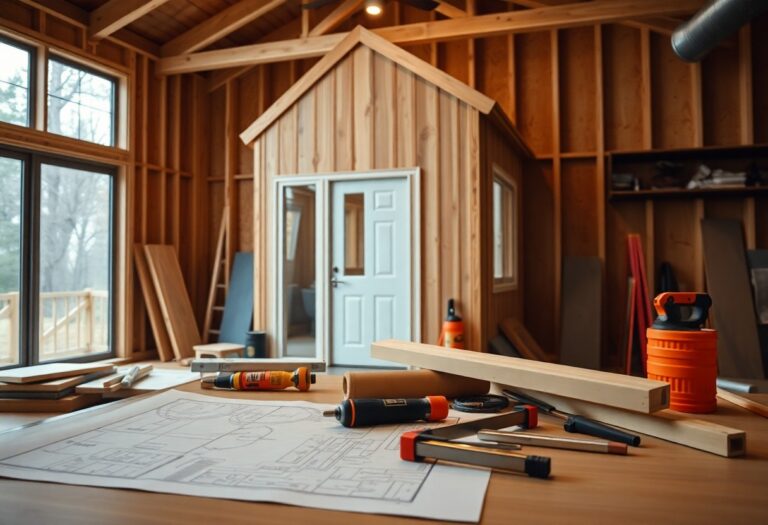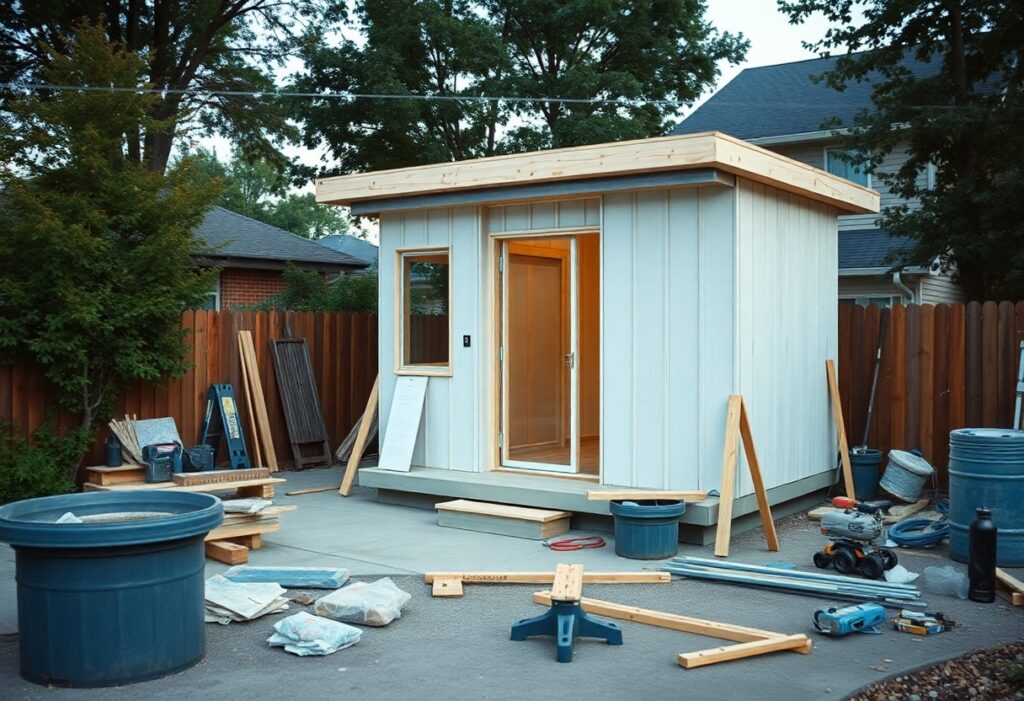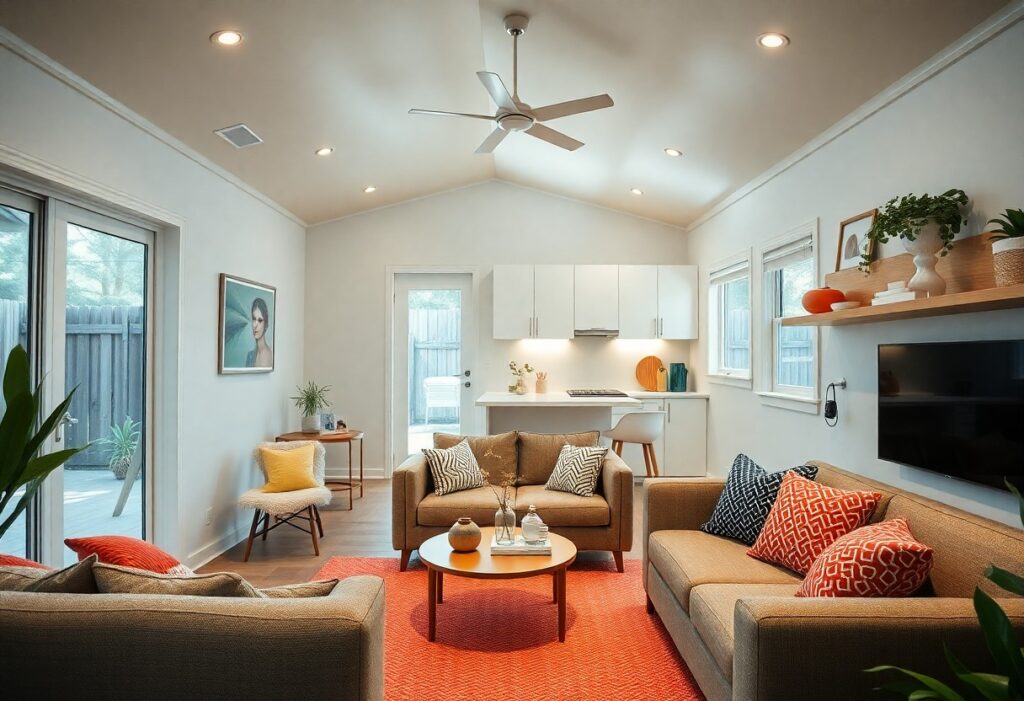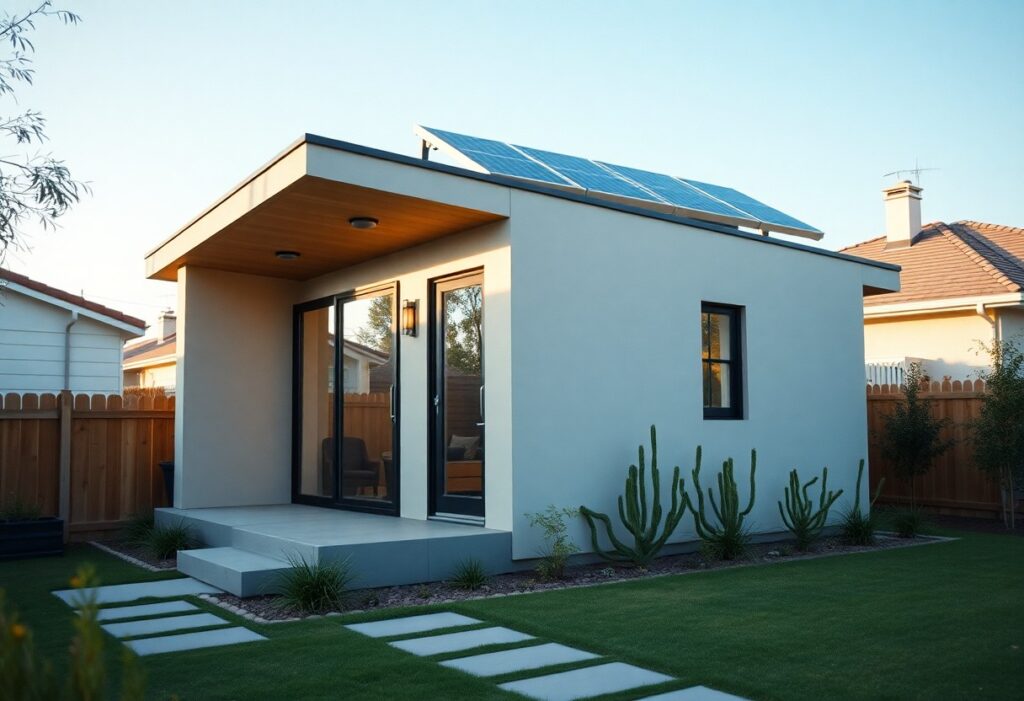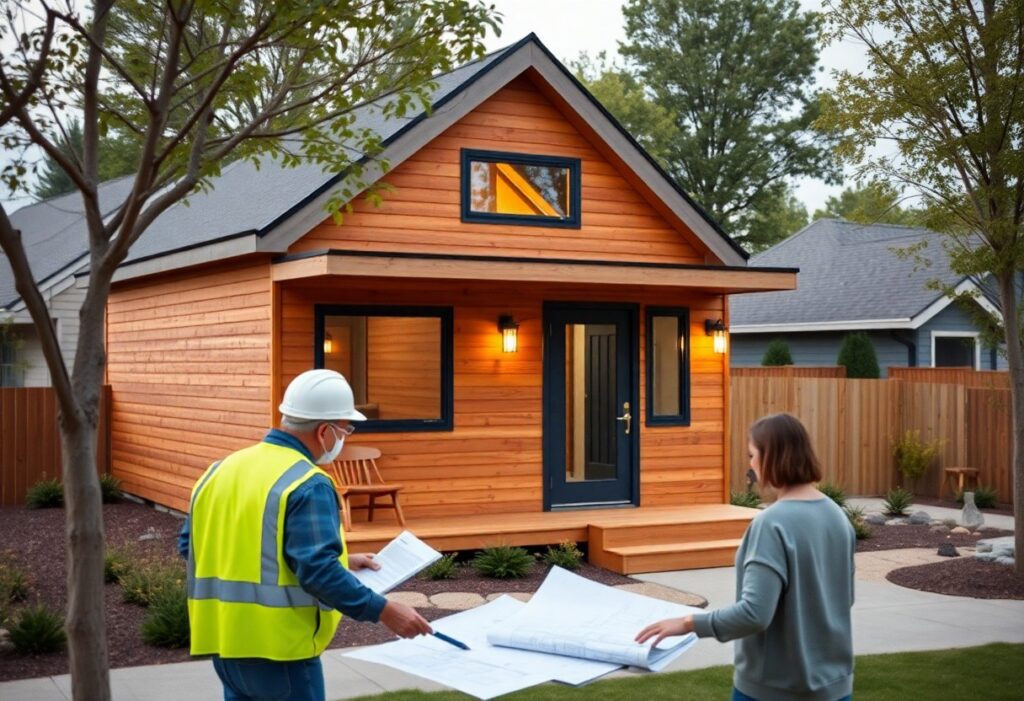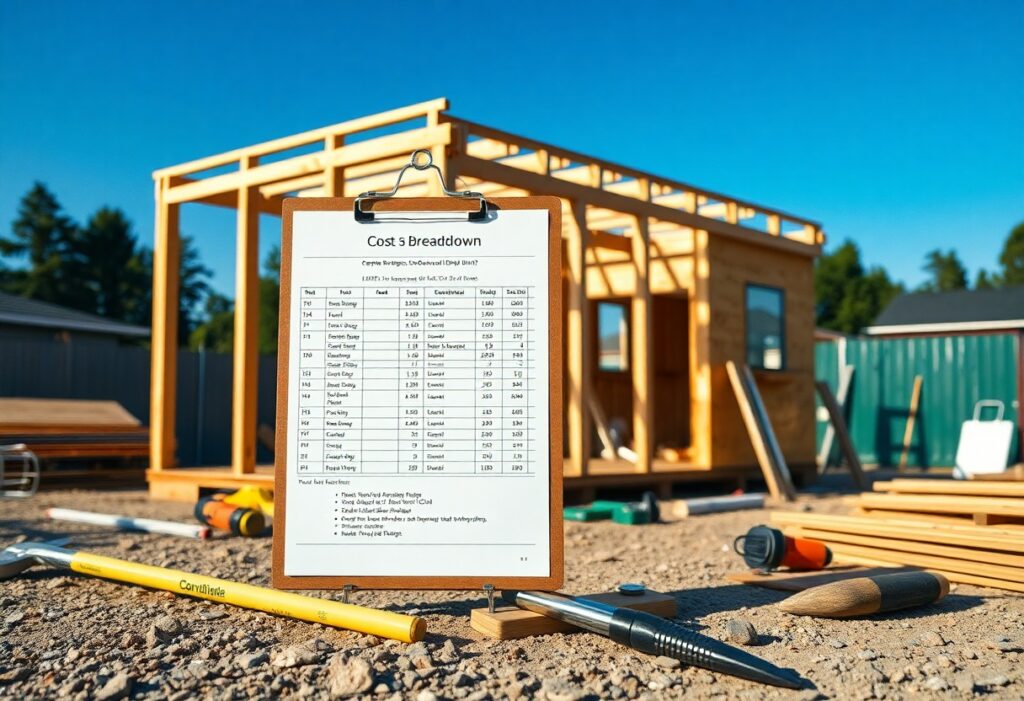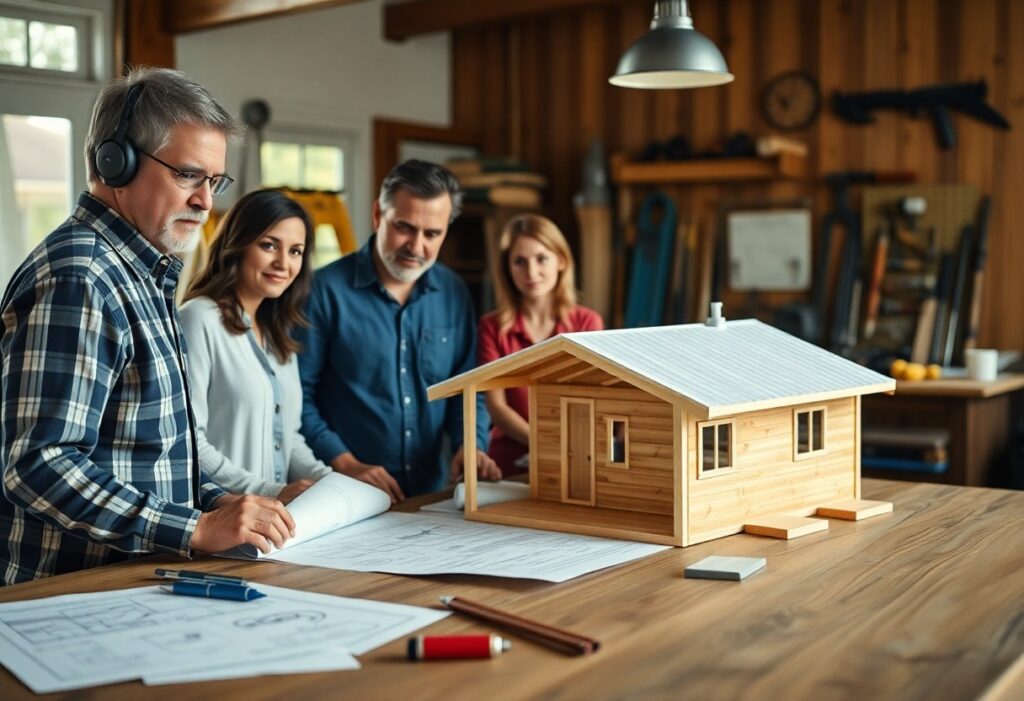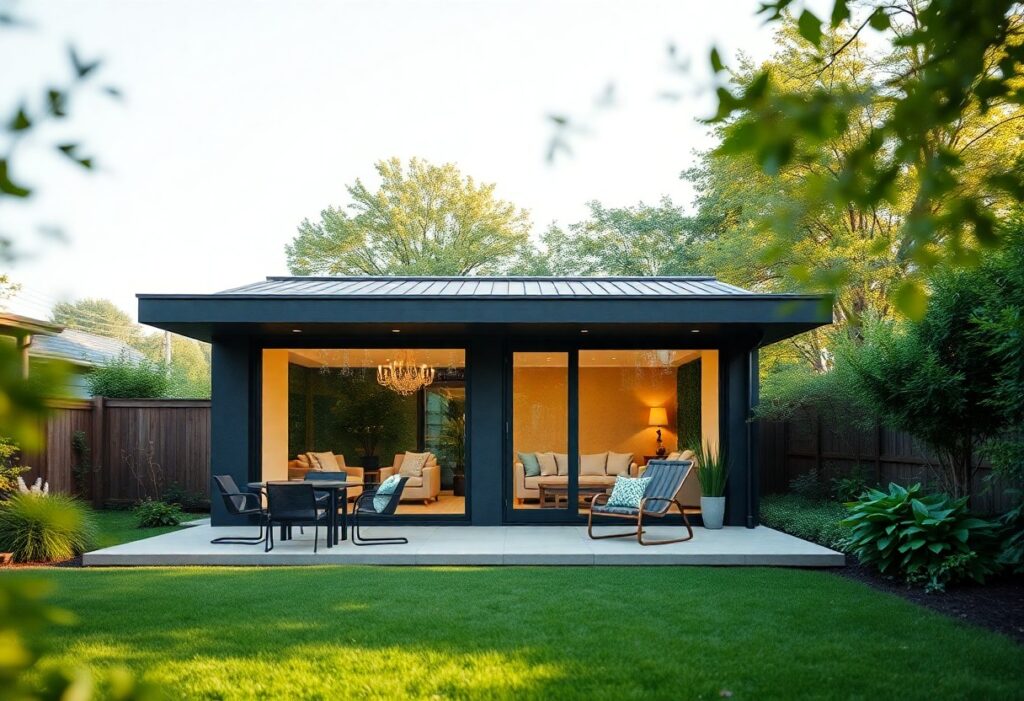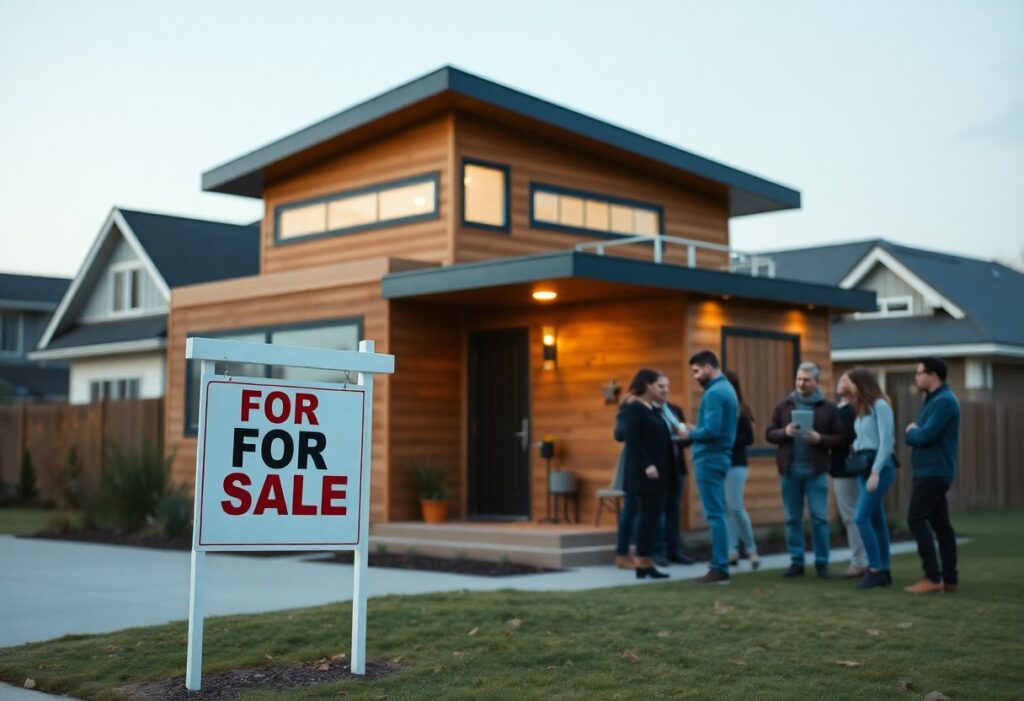ADUs, or accessory dwelling units, can be a smart investment for increasing property value and providing additional living space. As you begin on this project, it’s important to consider various factors that will influence the overall cost, including design, materials, and labor. Expect to see a wide range of costs, typically between $100,000 and $300,000, depending on your specific needs and location. In this post, we’ll break down the elements that contribute to those costs, helping you make an informed decision about your ADU construction journey.
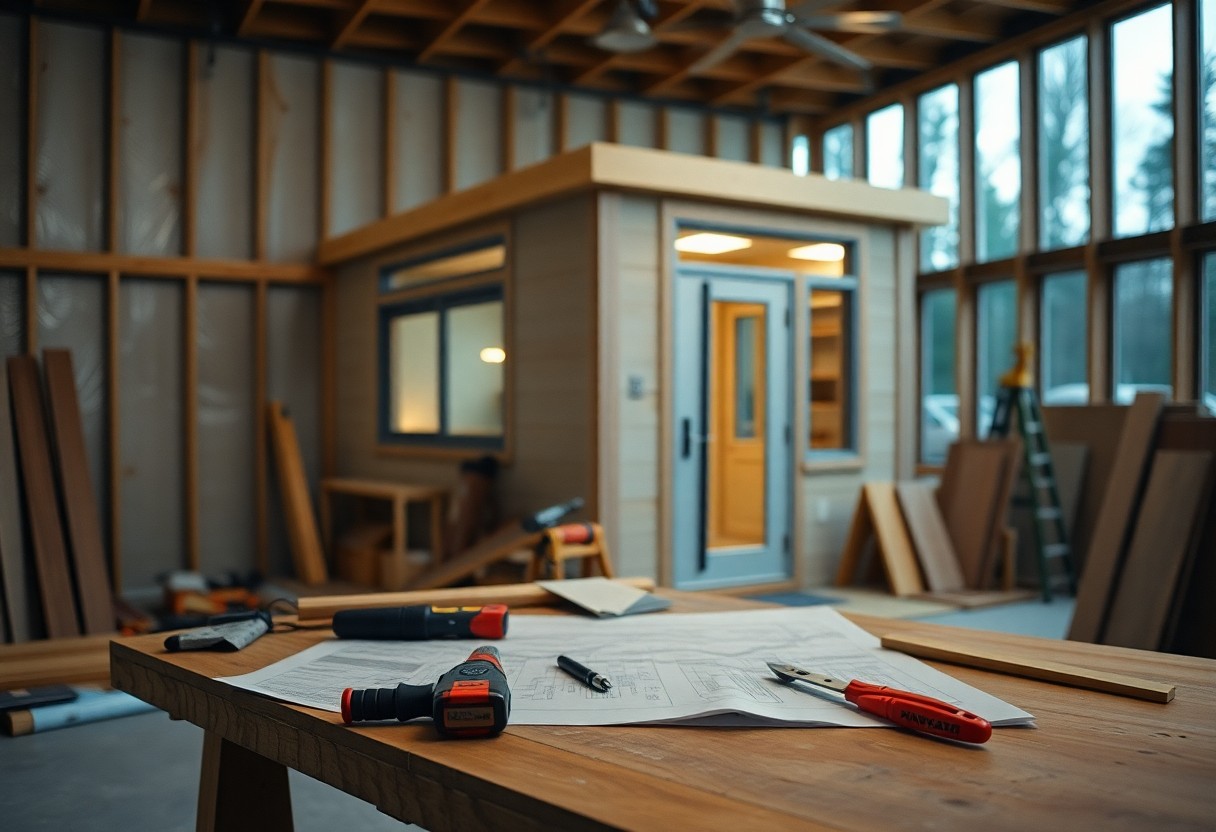
Key Takeaways:
- Construction Costs: The overall cost to build an ADU can range significantly, typically between $100,000 to $300,000, depending on factors such as size, materials, and location.
- Permitting and Fees: Additional expenses may include permits, zoning fees, and utility connections, which can add thousands to the total budget.
- Financing Options: Homeowners have various financing alternatives available, such as loans and grants, which can help spread out the costs over time.
Factors Influencing ADU Costs
A variety of factors can significantly impact the overall cost of building an Accessory Dwelling Unit (ADU). Key elements to consider include:
- Size and Layout
- Materials and Finishes
- Labor Costs
- Location and Zoning Regulations
- Utility Connections
Thou must carefully assess these factors to ensure your project aligns with your budget and expectations.
Size and Design
Along with the size of the ADU, the design complexity can influence the overall costs. More elaborate designs typically demand increased labor and materials, affecting your budget significantly.
Location and Zoning Regulations
Above all, your ADU’s location plays a vital role in determining the final cost involved. Local zoning regulations can either facilitate or hinder ADU construction, impacting necessary permits and associated fees.
And when evaluating your property, it’s important to consider that various municipalities may impose different zoning laws, which can complicate the building process. Furthermore, each city may have specific permit fees and restrictions regarding the maximum allowable size. Understanding these regulations is vital, as they can have strong implications on your timeline and financial planning. Therefore, you should research local ordinances to avoid unexpected delays or costs that can derail your ADU project.
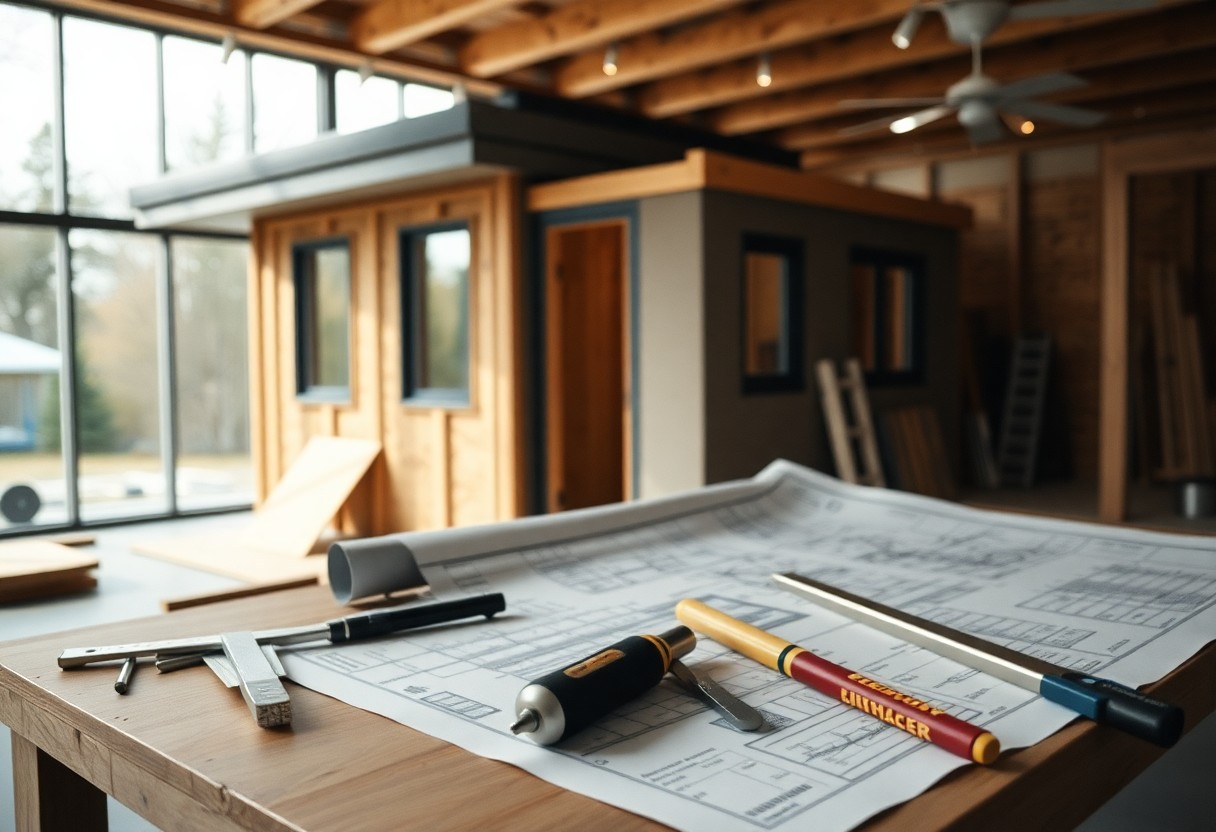
Construction Costs
While planning your ADU project, understanding construction costs is necessary. These expenses comprise various elements, including materials, labor, and necessary permits. Depending on your location and the complexity of your design, the total cost can vary significantly. Keep in mind that unexpected expenses may arise during construction, so budgeting for contingencies is wise.
Materials and Labor
The choice of materials and the cost of labor will heavily influence your overall budget. Selecting high-quality materials can lead to a longer-lasting structure, while investing in skilled labor ensures that your ADU is built to code and meets your expectations. Researching local contractors can yield competitive pricing and help you gauge the average costs in your area.
Permitting and Other Fees
One aspect you cannot overlook is the cost of permitting and other fees associated with your ADU project. These expenses can include plans, inspections, and utility connections, all of which vary by location.
And while these fees might seem insignificant compared to construction costs, they can add up quickly. Make sure to check with your local government for specific regulations and fee structures, as they can substantially impact your overall budget. Factoring in these additional expenses will help you avoid surprises down the line and ensure your project runs smoothly.
ADU Construction Cost Budget
The following cost breakdown is for a 650 sqft detached ADU.
Upgrades will likely drive up the cost of your ADU depending on your selection.
This is for an attached ADU. This cost includes the design, planning, city permits, and construction costs.
| Line Item | Cost | Comments: |
|---|---|---|
| Design & Structural Engineering | $12,000 | The budget included design fees for ADU Design and Structural Engineering. Fees also covered per State of California Title 24 requirements, and a storm water drainage plan by the Civil Engineer. |
| Building Permits | $8,500 | All fees required to plan and build the ADU through the City. Fees included Department of Building and Safety ($), Fire Department to verify there was a fire hydrant close by, Engineering, Storm water.
|
| Site Prep / Excavation | $7,000 | ADU was built in a backyard that was almost completely flat and required no demolition of any existing structures and very little site prep. This fee covered the trenching on the foundation footings and preparation of the building pad. Also included the hauling of the spoils (i.e. – dirt) that were removed when we trenched the footings. |
| Site Drainage System & Rain Harvesting | $9,000 | All new construction in Los Angeles requires that any rain that falls on the roof (or other impermeable structures) must be retained on-site and treated. This requires rain barrels to collect all roof run-off and a filtration system to treat the rainwater before it is used for landscaping on sent to the city storm drain. |
| Concrete Foundation | $19,500 | Our Structural Engineer designed a slab-on-grade foundation for the ADU due to the flatness of the backyard. Our footings were in expansive soil so they needed to be a little deeper than usual, but overall the foundation was relatively inexpensive and easy to build. |
| Rough Carpentry | $26,000 | Standard 2×6 walls and 2×12 roof joists were used and the amount of structural beams were kept to a minimum to keep the costs of the rough framing relatively low. |
| Stucco | $14,500 | A smooth “Santa Barbara” stucco siding finish was used on the exterior which gives the home a modern, luxurious feel. |
| Roofing | $12,000 | A high quality asphalt shingle “cool roof” was installed to match the roof of the existing home. The roof comes with a 30 year warranty and looks fantastic!. |
| Windows & Exterior Doors | $9,500 | We used Milgard Ultra Series fiberglass casement windows throughout the ADU. The fiberglass windows are a great choice for durability and longevity. |
| Plumbing | $24,600 | This covered all the rough and finish plumbing and plumbing fixtures for the ADU, but it also included connecting the ADU to the city sewer and taping into the city fresh water lines. |
| Electrical | $21,500 | The ADU is set-up with its own electrical meter and panel, so the ADU can be rented and the renter can pay for their energy usage separately from the main house. Due to the age of the existing electrical panel on the front house the city required that we upgrade the existing panel as part of the project which added money to our budget for electrical. |
| HVAC | $7,200 | A super-efficient mini split HVAC system was designed and installed for the ADU. |
| Insulation | $8,500 | The Title 24 requirement for energy efficiency are already pretty high in the State of California, but we decided to increase the efficiency of our ADU even more by adding 2″ of continuous insulation to the exterior of the walls and roof. This additional insulation cost a little more but will improve the comfort in the ADU substantially. |
| Drywall & Interior Paint | $11,500 | A Level 5 drywall finish was applied to interior walls of the ADU. A Level 5 finish (for those of you unaware) is a full skim coat finish which gives the walls a completely smooth finish. It is the highest level of finish available and gives the ADU a luxurious wall finish. |
| Interior Doors | $3,800 | Solid wood interior doors were used throughout the ADU. In such a small home it is important to use solid wood to reduce sound transfer and noise throughout the home. |
| Millwork (Base & Case) | $4,750 | Nothing too special here. Just traditional solid wood base and case around the floors, doors, and windows. Expertly installed and finished of course! |
| Kitchen Cabinets | $9,500 | Solid rift white oak kitchen cabinets were used and look awesome! White oak is a very popular choice for high end kitchens and baths and for good reason. It provides a warm natural look and will last a lifetime. |
| Flooring | $6,500 | Luxury Vinyl Plank (LVP) flooring was used as it is a very beautiful and long lasting flooring option. |
| Tile & Stone | $9,750 | We opted for a beautiful marble for both the kitchen and bath vanity tops. And the shower and bathroom floor we’re tiled with hand made cement tiles for an earthy finish. |
| Appliances | $6,800 | A Bosch apartment size appliance package was installed for this ADU. Great appliances that are well proportioned for the space. |
| Total | $232,400 |
This is just one example of what an ADU cost. I know a lot of you are getting your calculators out to see what the cost per square foot price is for this ADU. After all, that is how we are taught to determine whether we are getting a good deal when building our new home.
Financing Options
After deciding to build an ADU, you’ll need to explore various financing options to make your project a reality. Understanding the different available routes can help you choose the best fit for your financial situation and future goals.
Traditional Loans
To finance your ADU, traditional loans such as home equity loans or line-of-credit options might be a viable choice. These loans typically offer lower interest rates and flexible repayment terms, allowing you to fund your construction project while leveraging the equity in your home.
Alternative Financing Solutions
With the rise of unique income streams, alternative financing options have become increasingly popular for ADU projects. Strategies such as crowdfunding, peer-to-peer lending, or personal loans can provide the capital needed, albeit with varying interest rates and terms.
Another point to consider is that alternative financing solutions may carry higher interest rates compared to traditional loans, which can impact your long-term budget. Moreover, platforms for crowdfunding offer the potential to engage community support, yet they might also require a compelling pitch to attract investors. While these options offer flexibility, ensure you thoroughly evaluate the terms and risks associated with each method before committing to a financing path.
Potential for Return on Investment
Your investment in an ADU can yield significant returns. Not only does it provide additional living space, but it can also serve as a source of income or enhance the overall value of your property, making it a smart decision for homeowners looking for a financial boost.
Rental Income Potential
Potential rental income from an ADU can substantially offset your mortgage or property expenses. By renting out the unit, you can create a steady cash flow, making your investment more financially viable while providing affordable housing to tenants.
Property Value Increase
Against market fluctuations, an ADU can increase your property’s worth significantly. Homes with ADUs are often more attractive to potential buyers, which can lead to higher resale values. This added space allows for greater flexibility in use, whether for family members or tenants, contributing to a stable appreciation of your asset.
The integration of an ADU can positively impact your property’s value by enhancing its appeal and functional space. As demand for rental housing rises, properties with ADUs tend to experience greater interest from buyers, reflecting in a favorable market evaluation. Additionally, if you ever decide to sell, the presence of an ADU can make your home stand out in a crowded market, leading to potentially lucrative offers.
Common Challenges and Considerations
For anyone looking to build an ADU, it’s imperative to anticipate the common challenges and considerations that may arise during the process. These can include financing, design choices, and potential zoning restrictions, all of which can impact your project’s success and overall budget. Understanding these challenges will better equip you to navigate the complexities and make informed decisions along the way.
Understanding Local Regulations
By familiarizing yourself with your area’s local regulations, you can avoid potential setbacks in your ADU project. Zoning laws, building codes, and permit requirements can vary significantly from one community to another, affecting your design and construction options. Ensure you do thorough research or consult with professionals to stay compliant.
Navigating the Construction Process
By mastering the construction process, you can mitigate issues that may arise during your ADU build. This includes hiring the right contractors, adhering to timelines, and ensuring that your project stays within budget. A smooth construction phase not only saves time and money but also contributes to the overall quality of your ADU.
Local authorities typically require several permits before you can commence building your ADU. Failure to secure these permits can lead to fines and delays. Furthermore, choosing reputable contractors with experience in ADU projects can help you avoid unexpected challenges. Stay actively involved in the construction phase, as communication with your team is vital to address any concerns and ensure your project is executed as planned. By staying informed and proactive, you enhance your chances of a successful build.
Case Studies and Examples
Many homeowners have commenceed on the journey of building an ADU, each with varying costs. Here are some illustrative case studies:
- Seattle, WA: 800 sq. ft. ADU costing around $150,000.
- Los Angeles, CA: 400 sq. ft. detached ADU priced at $135,000.
- Austin, TX: Garage conversion ADU for approximately $80,000.
- Portland, OR: 600 sq. ft. new construction at $120,000.
- San Francisco, CA: 500 sq. ft. prefabricated ADU for $140,000.
For more detailed insights, check out How Much Does Building an ADU Cost in 2025?.
Cost Breakdown of Different ADU Types
Above, you’ve seen varying ADU costs. Here’s a breakdown of costs associated with different types of ADUs:
| Type of ADU | Estimated Cost |
|---|---|
| Detached Units | $155,000 – $275,000 |
| Garage Conversions | $125,000 – $150,000 |
| Basement Conversions | $70,000 – $150,000 |
| Prefab ADUs | $150,000 – $260,000 |
| Modular ADUs | $2000,000 – $350,000 |
Assume that you factor in permits, design fees, and construction costs when budgeting for your ADU.
Success Stories from Homeowners
Homeowners across the country have experienced remarkable success with their ADU projects.
Even those who faced challenges found ways to turn their visions into reality. For instance, some homeowners achieved monthly rental income exceeding $2,000 from their ADUs, significantly offsetting their mortgage payments. Others embraced the idea of multi-generational living, creating space for parents while enhancing their properties’ value. Building an ADU has enriched lives and adapted to your unique housing needs, showcasing flexibility and potential in your investment.
Conclusion
Now that you have a better understanding of how much it costs to build an ADU, you can make informed decisions based on your budget and needs. Keep in mind factors such as design, materials, labor, and permits that will impact your overall expenses. By carefully planning and researching your options, you can create an ADU that enhances your property while fitting within your financial constraints. Investing time upfront will ensure that you achieve the best possible outcome for your project.
Q: What factors influence the cost of building an ADU?
A: The cost of building an Accessory Dwelling Unit (ADU) can vary widely based on several factors. Key considerations include location, size, and design complexity. For instance, urban areas often have higher construction costs due to labor and materials demand. The size of the ADU also plays a significant role; larger units require more resources, impacting the overall price. Additionally, the type of construction—whether it’s a new build or a conversion of an existing space—affects costs. Special features like eco-friendly materials, advanced technology installations, and customized finishes can further increase expenses.
Q: What are the estimated costs for different types of ADUs?
A: The estimated costs for constructing an ADU can vary based on the type and design. A garage conversion might range from $20,000 to $50,000, as it typically requires minimal new construction. A backyard cottage or custom-built unit averages between $100,000 to $200,000, depending on size, materials, and finishes. Pre-fabricated ADUs can offer a more budget-friendly option, costing around $50,000 to $150,000. Always consider additional expenses like permits, utility connections, and landscaping, as these can substantially impact the final budget.
Q: Are there financing options available for building an ADU?
A: Yes, there are several financing options available for constructing an ADU. Homeowners can consider traditional mortgage loans, home equity lines of credit (HELOC), or cash-out refinancing to tap into existing equity in their homes. Some local governments offer specific loans or grants aimed at encouraging ADU development, which may come with favorable terms. Additionally, various financing options, such as construction loans, allow for funding specifically dedicated to building new structures. It’s advisable to explore all available options and consult with a financial advisor to determine the best fit for your situation.

